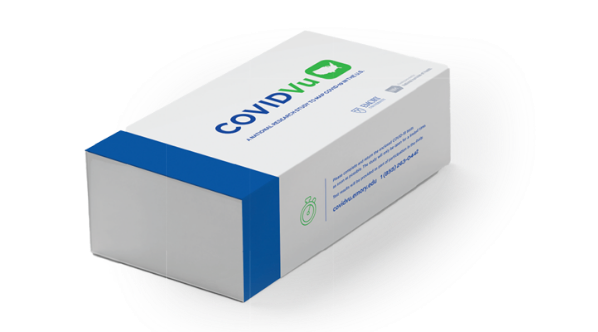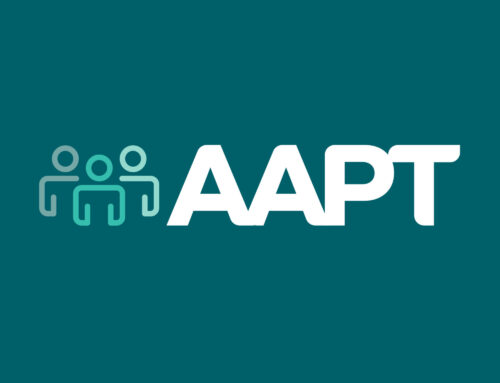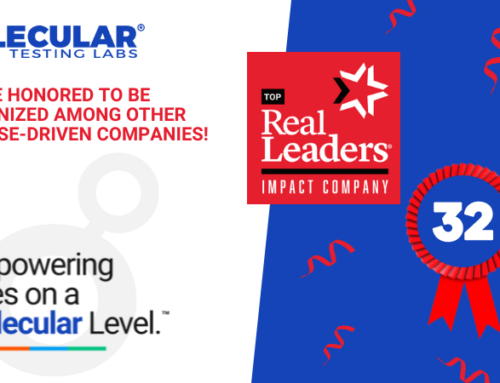
Molecular expands partnership with Emory University for COVID research
Share:
Dr. Patrick Sullivan, Professor in Epidemiology in The Rollins School of Public Health at Emory University, has spent the bulk of his career studying HIV/AIDS, specifically about how to effectively reach more patients for preventative screening. Dr. Sullivan’s PrEP@Home study was one of the first initiatives in research to evaluate self-collection of samples for diagnostic results. These samples and results were later used for pharmaceutical-based interventions for HIV prevention.
In September 2019, Dr. Sullivan partnered with Molecular Testing Labs as his logistics and diagnostics partner for existing and future HIV treatment and prevention self-collection research. Molecular was able to quickly migrate six of Dr. Sullivan’s NIH and CDC funded studies onto its platform, freeing his research team to focus on patient recruitment and program design.
When the COVID pandemic hit, Dr. Sullivan immediately recognized the potential impact thata self-collected screening program could have on the World’s knowledge of Covid-19. He quickly enlisted Molecular in a series of cascading studies around the feasibility and efficacy of self-collection programs for the detection of both active infections and antibody presence.
In March 2020, Dr. Sullivan and Molecular’s Medical Director, Dr. Charles Sailey, discussed an exhaustive list of sample types that could potentially be screened for SARS-CoV-2 RNA via rt-PCR methods, from swabs, to saliva, to blood, and even urine.
Detection of SARS-CoV-2 RNA and Antibodies in Diverse Samples: Protocol to Validate the Sufficiency of Provider-Observed, Home-Collected Blood, Saliva, and Oropharyngeal Samples
Background: The response in the United States to the coronavirus disease (COVID-19) pandemic has been hampered by a lack of aggressive testing for the infection. Testing for severe acute respiratory syndrome coronavirus 2 (SARS-CoV-2) is the cornerstone of an effective public health response. However, efforts to test have been hampered by limited reagents, limitations in the availability of swabs used for the collection of nasopharyngeal swab (NPS) specimens, limitations in personal protective equipment (PPE) for health care providers collecting the NPS specimens, and limitations in viral transport media for transporting the specimens. Therefore, more flexible options for screening for SARS-CoV-2 RNA and serologic responses are critical to inform clinical and public health responses.
Conclusions: Defining a conceptual framework for assessing the sufficiency of patient-collected samples for the detection of SARS-CoV-2 RNA and serologic responses to infection is critical for facilitating public health responses and providing PPE-sparing options to increase testing. Validation of alternative methods of specimen collection should include objective measures of the sufficiency of specimens for testing. A strong evidence base for diversifying testing modalities will improve tools to guide public health responses to the COVID-19 pandemic.
It was clear that provider-collected nasal swabs wouldn’t be sufficient for the expanding epidemiological needs of the pandemic. Dr. Sullivan and his team focused on patient recruitment and sample collection feasibility, while Dr. Sailey and the Molecular team got to work evaluating these various sample types.
To address the feasibility of self-collection, Dr. Sullivan created the iCollect Cohort in which sample collection was done under the supervision of a clinician via telehealth. The sample collection methods evaluated included throat (oropharyngeal) swabs, saliva, and dried blood spots.
Suitability and Sufficiency of Telehealth Clinician-Observed, Participant-Collected Samples for SARS-CoV-2 Testing: The iCollect Cohort Pilot Study
Background: The severe acute respiratory coronavirus 2 (SARS-CoV-2) pandemic calls for expanded opportunities for testing, including novel testing strategies such as home-collected specimens. We aimed to understand whether oropharyngeal swab (OPS), saliva, and dried blood spot (DBS) specimens collected by participants at home and mailed to a laboratory were sufficient for use in diagnostic and serology tests of SARS-CoV-2.
Conclusion: These pilot data indicate that most participant-collected OPS, saliva, and DBS specimens are suitable and sufficient for testing for SARS-CoV-2 RNA and serology. Clinical observers rated the collection of specimens as suitable for testing, and visual and quantitative laboratory assessment indicated that the specimens were biologically sufficient. These data support the utility of participant-collected and mailed-in specimens for SARS-CoV-2 testing.
Almost in real time, as Emory was able to recruit patients, Molecular was able to ship them the necessary collection devices, receive returned samples, and quickly provide results. All sample collection modalities were shown to be possible for self-collection and effective for obtaining a testable sample.
By this point in the summer, the pandemic had reached much of the country and most states were in some form of lockdown. Limited PCR screening early in the pandemic and persistent uncertainty about antibody expression meant our understanding of the pandemic remained rather stunted. Emory and Molecular embarked on a nationwide survey of COVID antibodies using self-collected dried blood.
Protocol for a national probability survey using home specimen collection methods to assess prevalence and incidence of SARS-CoV-2 infection and antibody response
Background: The U.S. response to the SARS-CoV-2 epidemic has been hampered by early and ongoing delays in testing for infection; without data on where infections were occurring and the magnitude of the epidemic, early public health responses were not data-driven. Understanding the prevalence of SARS-CoV-2 infections and immune response is critical to developing and implementing effective public health responses. Most serological surveys have been limited to localities that opted to conduct them and/or were based on convenience samples. Moreover, results of antibody testing might be subject to high false positive rates in the setting of low prevalence of immune response and imperfect test specificity.
Conclusion: In addition to providing robust estimates of prevalence of SARS-CoV-2 infection and immune experience, we anticipate this study will establish a replicable methodology for home-based SARS-CoV-2 testing surveys, address concerns about selection bias, and improve positive predictive value of serology results. Prevalence estimates of SARS-CoV-2 infection and immune experience produced by this study will greatly improve our understanding of the spectrum of COVID-19 disease, its current penetration in various demographic, geographic, and occupational groups, and inform the range of symptoms associated with infection. These data will inform resource needs for control of the ongoing epidemic and facilitate data-driven decisions for epidemic mitigation strategies.
Through this work, the COVIDVu study was born. COVIDVu, funded by the CDC and the NIH, is a national research study to map COVID-19 in the U.S. Emory University has been able to evaluate active infections and the antibody response of tens of thousands of Americans from across the nation to better understand infection patterns and inform public health interventions.
Through this partnership, Dr. Sullivan and Molecular have demonstrated that patient self-collection is an effective methodology for population level screening of infectious diseases, both for HIV and COVID. Molecular looks forward to continuing to support the research efforts of Dr. Sullivan and others in the area of infectious disease identification and treatment.




